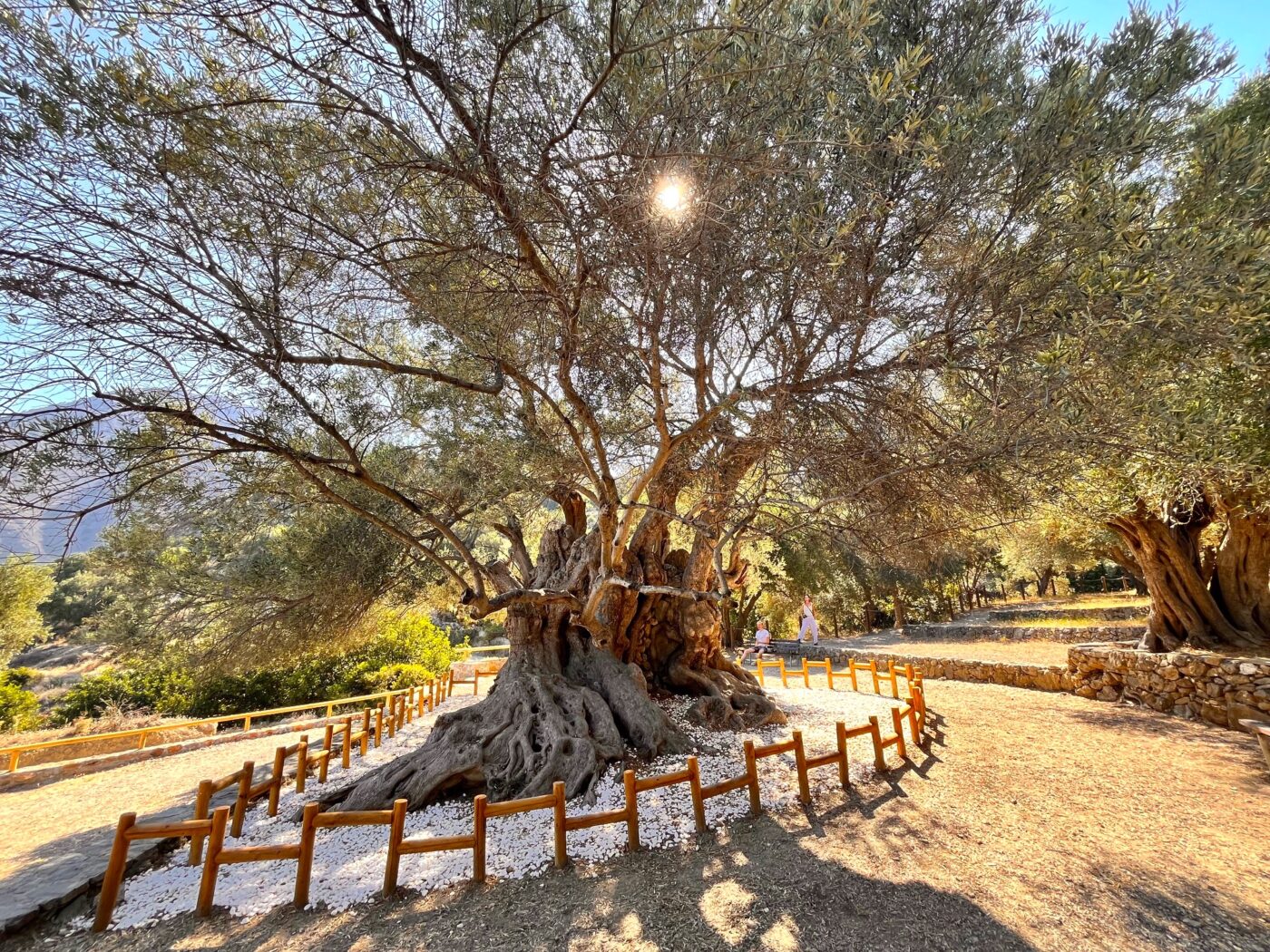TRIPPING OVER TIME, AND INTO THE SEDUCTIVE HEART OF CRETE
One visit is not enough
The Cretan heart, it turns out, has four chambers — just like goats and us. This elongated Mediterranean island — 160 wild and rocky miles east to west — is split into a surprisingly logical quartet of administrative regions, and not even the best F1 driver would attempt to swallow them all at once. Actually, you cannot: the roads are never straight, there are too many mountains in the way and the never ending shores splashed by waves of haunting blue make it impossible not to slow down and look.
Crete is both mass tourism and one of the loneliest islands you could imagine, in a Scottish Highlands kind of way. It could also be the world island, as a renowned university professor in Boston once suggested to me with scholarly authority. It was a history lecture with a nod to the strategic location of Greece’s biggest island, but now I think that designation — “world island” — could have other meanings. The sea-trading universe of the Minoans, Europe’s earliest advanced civilization, their eyes fixed on Egypt and hands creating luminous art starring bulls, dolphins, and women in charge. The worlds evoked by Nikos Kazantzakis and Kornaros, or the muscular mountains that flex their peaks like the plates on the back of a giant stegosaurus from Falasarna in the west to Sitia in the east, unbothered by the gazing of mere mortals, the grazing of the gentle kri kri goats or the passage of time.
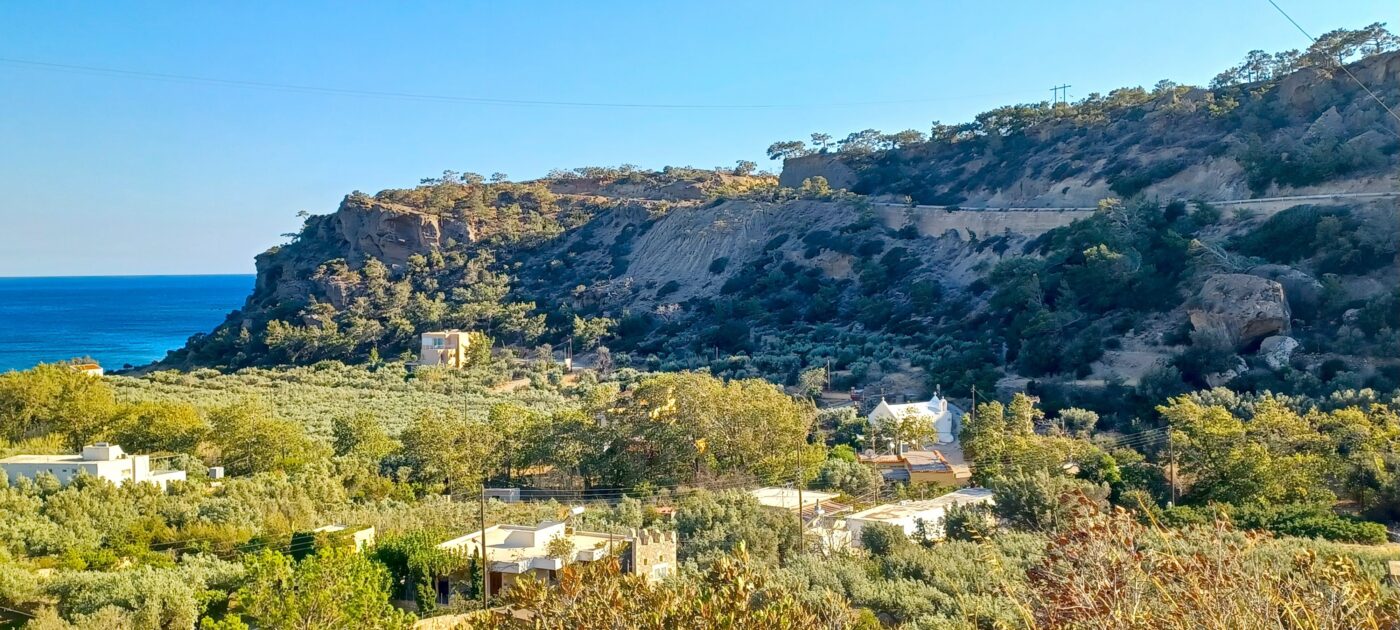
The Cretan topography is of a magnitude of beauty that defies easy comprehension or description by even the most seasoned of scribes. Somewhat more relatable, though no less enchanting, is the smile of the woman in the village bakery who sees you looking at the fresh orange semolina cake under the glass case on the countertop, then hands you a slice and will not let you pay. Or the taverna where you capably polished off some tasty antikristo lamb and a couple shots of raki five years ago and of which you forgot the name, but where somehow the waiter remembered yours.
Crete! — wait, let me also call it “megalonissos” (the big island) or even better, Kriti like the Greeks do — will not leave you indifferent. It is one of the very few places in the world where I always leave with a weight in my chest and a lump in my throat, because it is not easy to pull yourself away from a place that, once you allow yourself to take the time to approach it as you would a hopeful new friend or fragment of ancient verse, does not leave you. There is nothing, nothing at all that is small about this island.

So let’s face it, one trip is not going to be enough. There is simply too much to see and do (even if you want to do nothing but eat and wear too-revealing swimwear like the German tourists) and it takes time to take it all in. There are entire constellations to explore: those of ruined Minoan palaces, buzzing modern cities, hushed mountainside villages, and of course the beaches — from long sandy stretches that rock a Southern California vibe to dazzling coves only accessible by a short hike or even better, by boat.
Crete’s capital city is Heraklion. It is actually one of my favorite places anywhere — how can you not admire a city named for the Greek hero known to most of us as Hercules? It is a crackling island metropolis that leaves no room for glum northern thoughts; here the sunlight races down every street and byway like a weightless roller coaster. Everything about Heraklion projects, curiously enough, both lightness and power, from the Venetian Koules fortress guarding the harbor — perfect backdrop to a pirate movie — to the impregnable Venetian ramparts that surround the historic center, and then those jagged mountains that rise up like stern sentries behind the city. Not a one-postcard town.
On a previous trip to Heraklion I lingered for a few days before venturing on to Crete’s south coast and mythic spots like the Phaistos — Minoan palace ruins every bit as magnificent as the tourist-trampled Knossos — Matala with its chillout hippie spirit and weird sea caves (and a secret stunner of a restaurant), and the quiet beaches of Agia Galini and beyond. This time, however, my compass would point east to Lasithi, one of those four regional units of Crete (along with Heraklion, Rethymnon and Chania) and probably the one least touched by modern tourism.
That is partly a function of the terrain, which is about as rugged as it comes. Although, there is a spot in Lasithi from which you can almost see it all, literally: Azoria, an archaeological site perched on a double-peaked pair of acropolises overlooking Mirabello Bay. One might think of this, with not much hyperbole, as the Cretan Machu Picchu. With all due respect to the Incas, their mountain settlement dates back only to the 15th century, while the Archaic Greek city that now clings in dreamy ruins to this windswept mountainside has roots stretching back to the seventh century B.C. To put it into perspective, that is possibly even older than the emergence of the myth of Zeus, the Greek god of sky and thunder — and who, according to legend, was born in the sacred Psychro cave in the Lasithi Plateau.
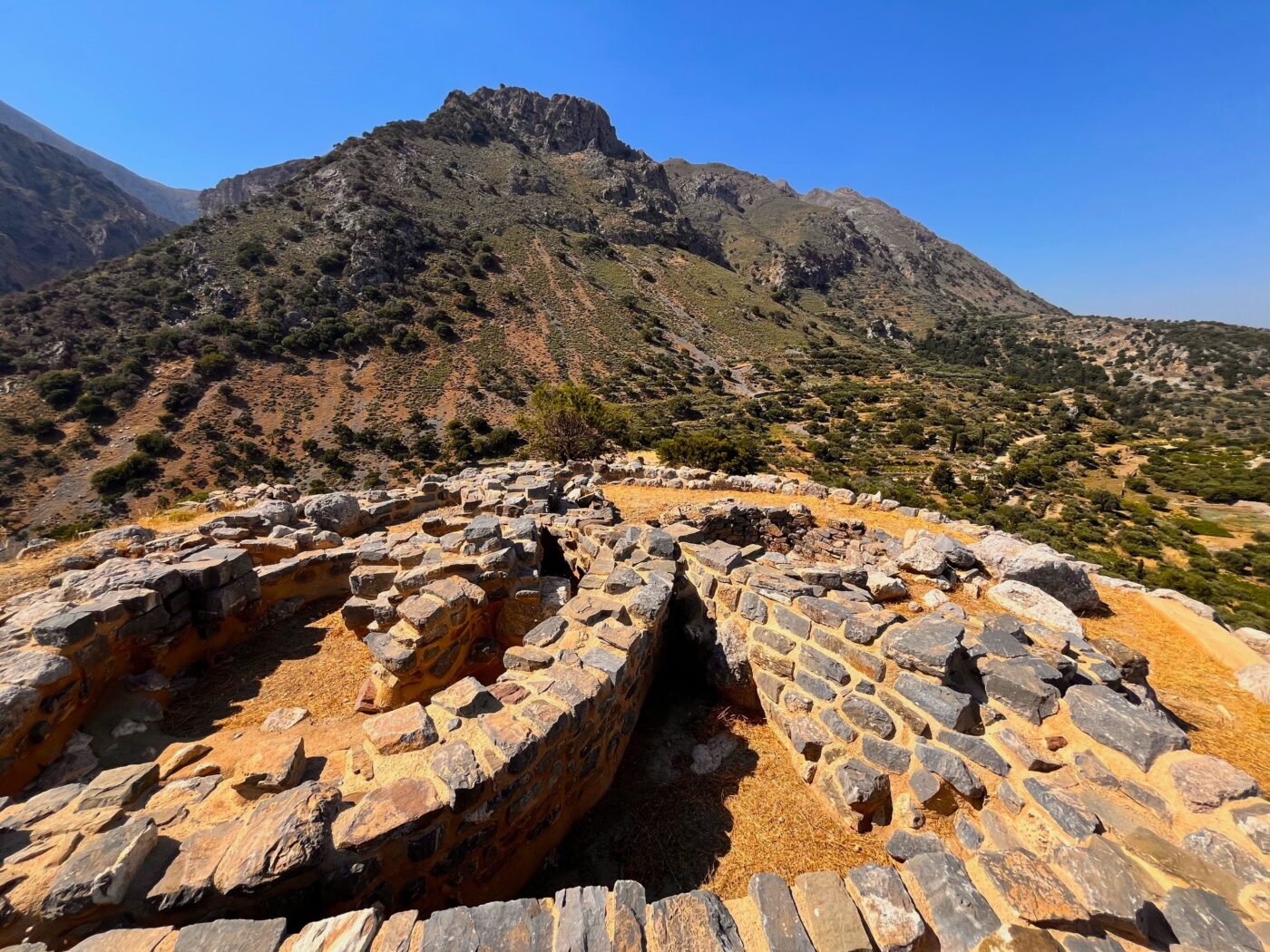
I’m not sure what took my breath away here more: a convocation of proud aquila chrysaetos — Cretan Golden Eagles — circling far above, possibly on the lookout for rabbits or a dead goat, or the ravishing panorama that spilled out in every direction. The craggy Thrypti mountains rise behind like mystical creatures from the pages of a J.R.R. Tolkien novel, with their undulating coats of grey stone and purple thyme, while the wide embayment of Mirabello beckons down below, the regional capital of Lasithi, Agios Nikolaos, a flash of white on the far side of the bay.
Almost as stupendous as all this visual drama is the fact that it was an American woman, the archaeologist Harriet Boyd Hawes, who first excavated this remote site in …1900. Among her findings were a mysterious series of sturdy circular structures that she described as late Mycenean. Was this an early “peak sanctuary” of which the Minoans were such ardent builders? There are no written records. Easier to discern, below these round ribbons of stonework, are the contours of an ancient, rectangular civic meeting place and next to it, the distinct ruins of an ancient olive press.
Despite illusions to the contrary, time doesn’t really stop here and as living proof of that there is the Monumental Olive Tree of Kavousi, situated on a protected site beneath the ruins of Azoria. According to an olive chronology method that involves evaluating the annual growth rings this tree dates to the Post-Palatial Minoan Period of Cretan history, and could be more than 3,000 years old. She wears her age well: the richly textured trunk boasts a diameter of 16 feet with a total circumference of nearly 47 feet, and the tree still bears fruit. There must be something in the soil as well as the air around here; because Lasithi produces more than 40,000 tons of olive oil a year and it is said to be among the world’s best.
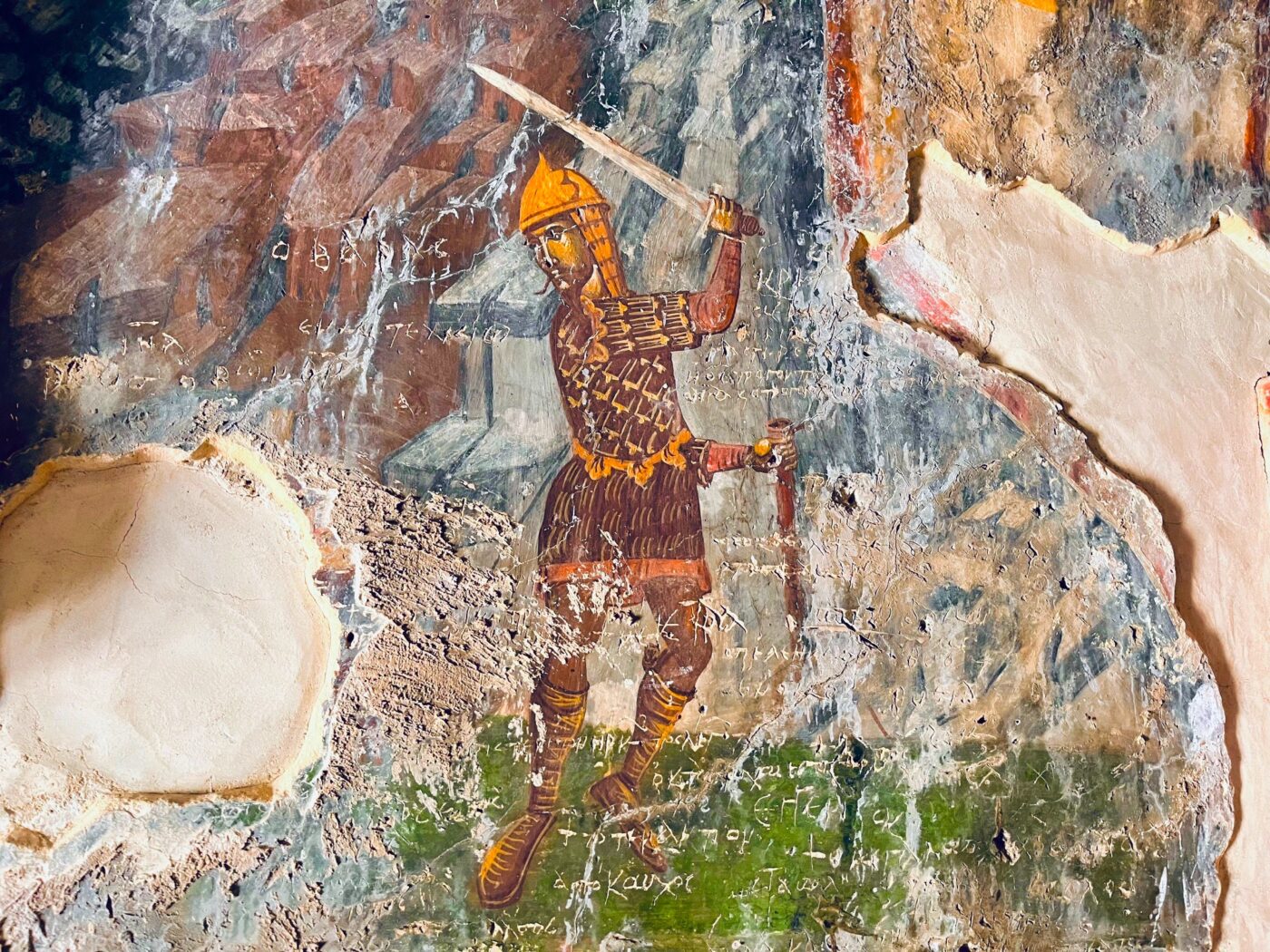
The olive tree stands sentinel over the village of Kavousi, a quintessentially Cretan village that also has some of the aesthetic characteristics of the Greek islands of the Cyclades and Dodecanese: think winding streets with low pastel-color houses, bright pops of pink bougainvillea flowers here and there and no shortage of plump cats lazing in the sun. For me though the real revelation came in the form of more than a half-dozen small barrel-vaulted churches, many with exquisite frescoes that were painted as far back as the 14th century. They are remarkably well-preserved and uncommonly beautiful. The Church of the Holy Apostles actually has two layers of richly colored frescoes, the “new” one dating from the 15th century. Scenes from the Old Testament come to life in a setting made all the more poignant by an ethereal silence.
The thing to do in Kavousi is simply to wander the narrow lanes, inspecting these gracious ancient chapels as you do, maybe stopping for a Greek iced coffee in one of the three kafeneions around the main village square. Take your time before someone takes it from you, the breeze seems to say…
Hungry? If you have the time to make the arrangements ahead of time, consider dropping by Nektaria’s Kitchen, on the outskirts of Kavousi overlooking the Med. This isn’t just any kitchen. Nektaria Kokkinaki is a renowned Greek chef and ambassador of Cretan cuisine, appearing frequently on Greek and international celebrity chef television shows. She grew up learning her grandma’s traditional recipes, drawing heavily on fresh, local ingredients, and now with great Cretan cheer shares ‘em with the world. She can design cooking demonstrations based on traditional Cretan gastronomy and create custom menus based around your preferences: meat, seafood, vegetarian, and of course Cretan olive oil and wine tastings.
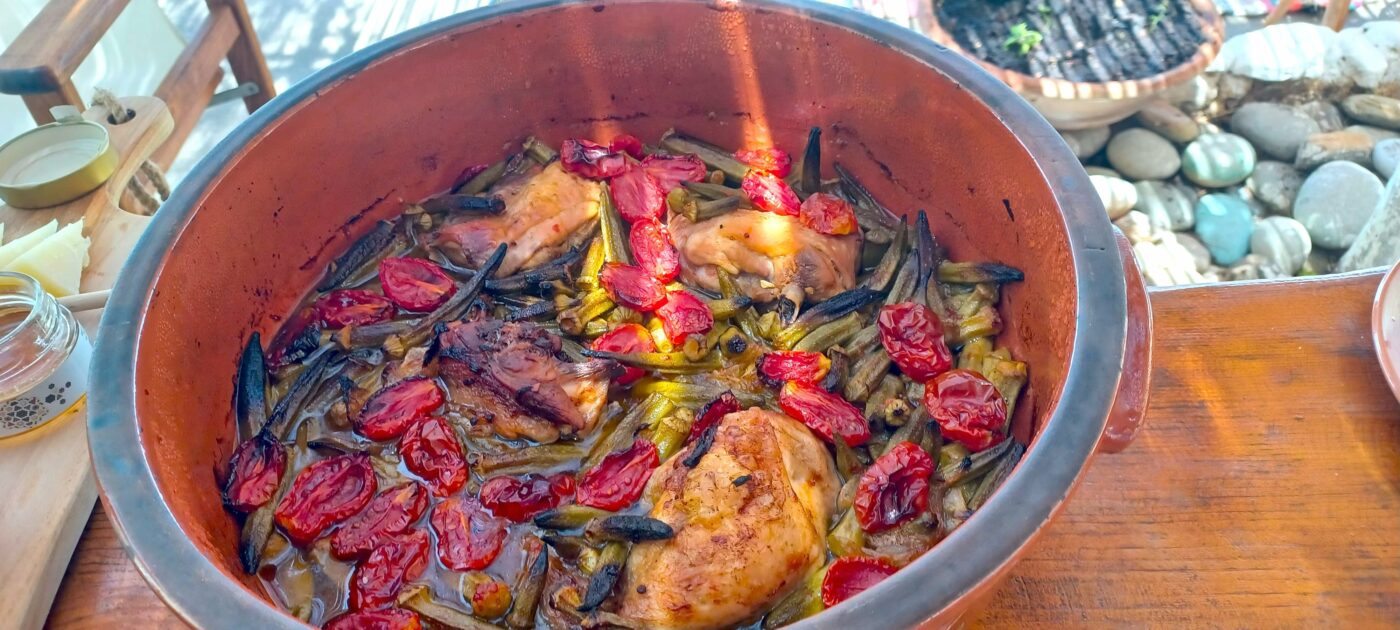
As my friend Stefanos Pertsemlides, a nutritionist based in Athens, reminded me before my trip, “While the Cretan diet does not differentiate much from the Greek/Mediterranean diet, what is unique is the very wide variety of ingredients that Crete has.”
And how. Nektaria prepared a vegetarian menu for me with more delicious locally-sourced veggies than I could even identify. Her dakos alone, a sort of Cretan twist on bruschetta, featured the tangiest chopped tomato topping I’ve ever tasted.
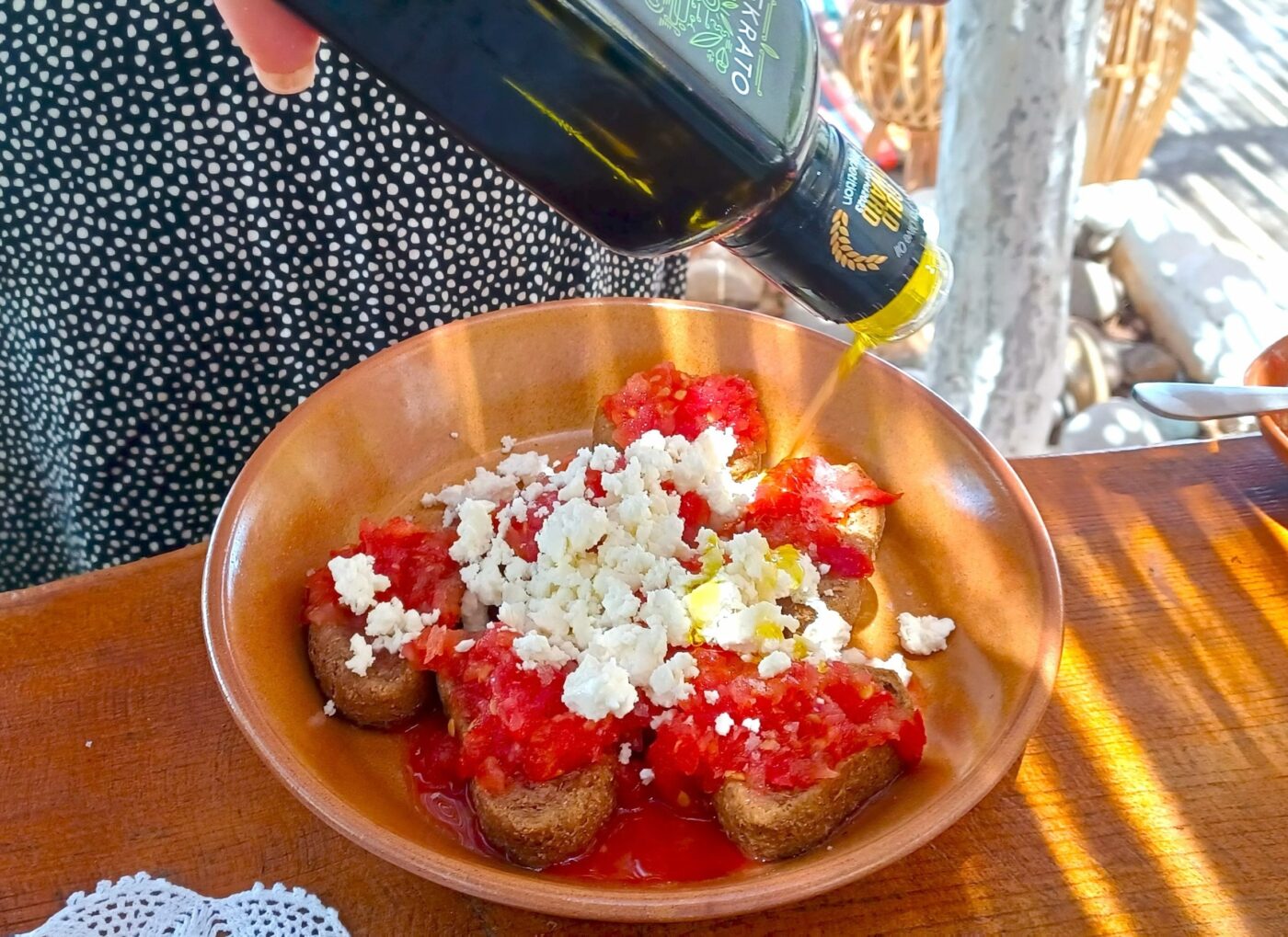
Driving south from Kavousi towards Ierapetra, you pass by the imposing entrance to the Gorge of Ha, whose thick canyon walls rise to heights higher than 1,300 feet on either side. Despite its unusual name, hiking the gorge is no laughing matter — in fact, you must go with an organized excursion. As Yiannis Bromirakis, a guide with the Cretan Canyoning Association, told me, “even goats that wander into the gorge rarely find the way out on their own.” He adds that “we interview potential participants first in order to evaluate their level of mountain experience.”
As I hinted earlier, there is not much that is fast or easy about Crete. The land’s features are of a rare complexity and intensity. The changes are almost kaleidoscopic in nature, the more so as you drive, which is also true as you head south of Ha and down the Isthmus of Ierapetra to the southeastern coast of the island. Just when you think to yourself, “Hey, look, it’s actually kind of flat around here” you’ll find yourself staring down the long, often desolate coast that marks the beginning of the Libyan Sea, as if the mountains have somehow now moved behind you, without asking permission.
A great place to contemplate both geography and history is from the breezy terrace of the new Kale Gastro Bar, which takes its name from the romantically brooding Venetian fortress called Kales right next to it. As elsewhere in Crete, the bounty and fresh flavors of the Cretan soils and seas will come through in every dish.
Driving west from Ierapetra brings you to the seaside village of Myrtos, with its bohemian vibe and easy access to a beach that is always shielded from the wind. Or you could take what turned out to be my favorite detour, heading west in the direction of Makry Gialos and the stretches of beach that could be considered the coastal back country of Sitia, extending all the way to Xerokampos and past the Minoan palace ruins at Zakros.
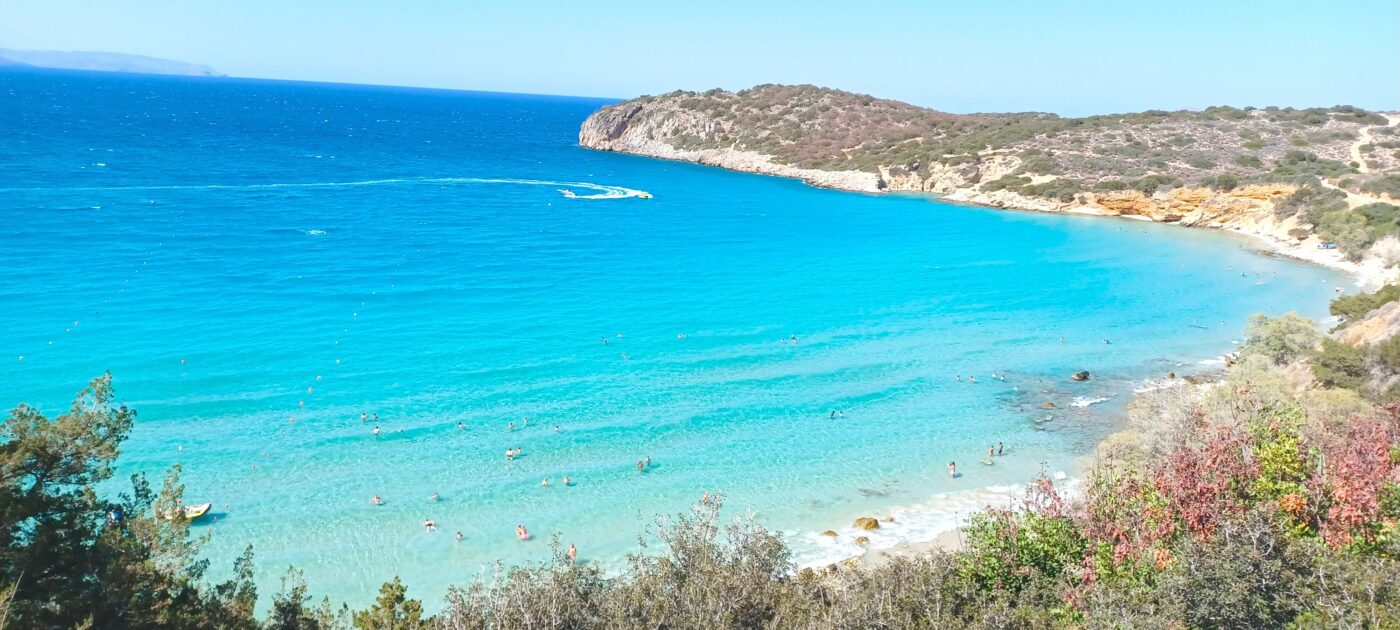
The beach at my hotel, a frankly delightful family-run spot called Coriva Beach Hotel and Bungalows was so pleasant, with yet another fantastic restaurant called Pelagos (don’t even get me started on how amazing their jazzed up version of Cretan ravioli is) open to the summer sea air, that I felt quite the Yankee fool for leaving on schedule.
This is the part where the emotion starts to well up, the pull that borders on the ache of wanting to be back in those southern Cretan latitudes, just a few suggestive whispers away from Africa.
I am thinking of the day when, on the way to lunch at Makry Gialos — where the Cretan Greek salad at Manolis’s Melydron beach cafe and restaurant is another revelation — I skipped ahead to Diaskari beach for a swim and a look at the excellent seaside taverna there, and then just had to stop the car on way back to Ierapetra.
The reason? Some rock formations that looked like something out of Jurassic Park. I had spotted similar crags earlier, the stunning limestone outcroppings above the hilltop village of Kalamafka that have earned it the unofficial designation as the Meteora of Crete.
But these ones are hovering over Agia Fotia, located almost midway between Ierapetra and Makry Gialos. Almost guarding the pretty white church of Agia Foteini down in the olive-green glen below and the wide, seductive curl of beach behind it. You park the car (easy), grab a slab of ruby watermelon or cold Greek beer because there’s a taverna (of course) and then go for a swim in clear blue water that feels like music. Does it get any better than this? Maybe in the movies, but this tableau is for real, Chris Nolan — this is Crete! And there I go again, goddammit, leaving my heart behind.
Anthony Grant’s words have appeared in The New York Times “T” magazine, Los Angeles Times, WONDERLUST and more, including his own Greek Column.






